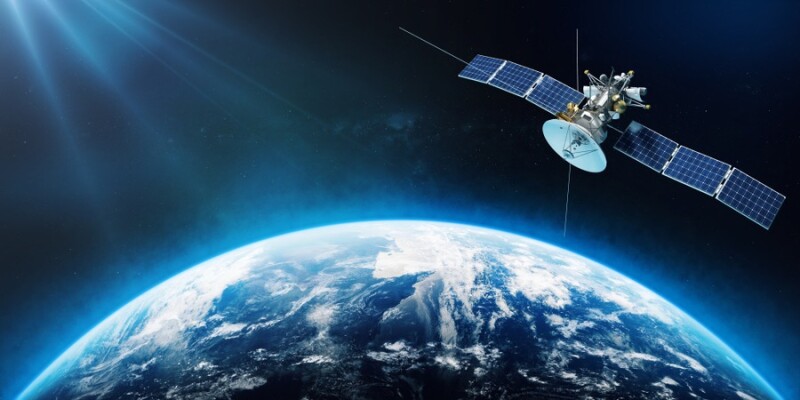In the pursuit of sustainable development, the utilization of Earth observation technologies has emerged as a critical tool. With advancements in satellite imaging, data analytics, and machine learning, Earth observation holds the key to unlocking immense economic and climate value across various industries. By 2030, these advancements are projected to revolutionize six key sectors: agriculture, forestry, energy, urban planning, transportation, and disaster management. This article delves into the transformative potential of Earth observation within each industry, highlighting the economic benefits and its pivotal role in addressing climate challenges.
Agriculture: Earth observation technologies are revolutionizing agriculture by providing invaluable insights into crop health, soil moisture, and weather patterns. By 2030, the integration of satellite imagery and data analytics will enable precision agriculture on a large scale. Farmers will have access to real-time information about crop conditions, allowing for optimized irrigation, pest management, and fertilizer application. This increased efficiency will not only boost crop yields but also reduce resource usage and environmental impact. Furthermore, Earth observation can facilitate early detection of crop diseases and monitor the effects of climate change, enabling proactive adaptation strategies.
Forestry: The forestry sector stands to benefit significantly from Earth observation technologies in the coming decade. By monitoring forest cover, biodiversity, and carbon sequestration, satellite imagery can aid in sustainable forest management and conservation efforts. By 2030, advanced remote sensing techniques will enable accurate mapping of forest resources and the monitoring of illegal logging activities. Moreover, Earth observation data can support efforts to combat deforestation and promote reforestation initiatives. By leveraging this technology, stakeholders can make informed decisions to preserve vital ecosystems and mitigate the impacts of climate change.
Energy: The energy industry is undergoing a profound transformation fueled by Earth observation technologies. By 2030, satellite-based monitoring of energy infrastructure, such as solar and wind farms, will optimize energy production and distribution. Real-time data on weather patterns and environmental conditions will enhance the efficiency and reliability of renewable energy systems. Additionally, Earth observation can facilitate the identification of suitable sites for renewable energy projects and assess their potential impact on local ecosystems. By harnessing these capabilities, the energy sector can accelerate the transition to a sustainable and resilient energy infrastructure.
Urban Planning: In the realm of urban planning, Earth observation technologies are poised to revolutionize how cities are designed and managed. By 2030, satellite imagery and geospatial data will enable comprehensive urban mapping, facilitating informed decision-making for infrastructure development and land use planning. These technologies can monitor urban expansion, population growth, and changes in land cover, allowing for the implementation of smart and sustainable city solutions. Furthermore, Earth observation can support disaster resilience by identifying vulnerable areas and improving emergency response capabilities. By integrating these insights into urban planning processes, cities can become more resilient, livable, and environmentally sustainable.
Transportation: The transportation sector stands to benefit from Earth observation technologies through improved efficiency, safety, and environmental sustainability. By 2030, satellite-based navigation systems and traffic monitoring will optimize transportation routes and reduce congestion. Real-time data on road conditions, weather, and traffic patterns will enhance safety and reliability across all modes of transportation. Additionally, Earth observation can support the development of autonomous vehicles and smart transportation systems, further reducing carbon emissions and improving air quality. By embracing these advancements, the transportation sector can transition towards a more efficient and sustainable mobility ecosystem.
Disaster Management: Earth observation technologies play a crucial role in disaster management by providing early warning systems, assessing damage, and coordinating response efforts. By 2030, advancements in satellite imaging and data analytics will enhance the accuracy and timeliness of disaster risk assessment and mitigation strategies. These technologies can monitor natural hazards such as hurricanes, floods, and wildfires, enabling proactive measures to protect lives and property. Moreover, Earth observation can support post-disaster recovery and reconstruction efforts by providing detailed damage assessments and monitoring progress over time. By leveraging these capabilities, communities can become more resilient to the growing threat of climate-related disasters.
Conclusion: As we look towards the future, the transformative potential of Earth observation technologies across various industries is undeniable. By 2030, these advancements will unlock immense economic value while addressing pressing climate challenges. From precision agriculture and sustainable forestry to renewable energy and resilient urban planning, Earth observation will play a pivotal role in shaping a more sustainable and prosperous future. However, realizing this vision will require concerted efforts from governments, industries, and the scientific community to harness the full potential of Earth observation for the benefit of society and the planet.
